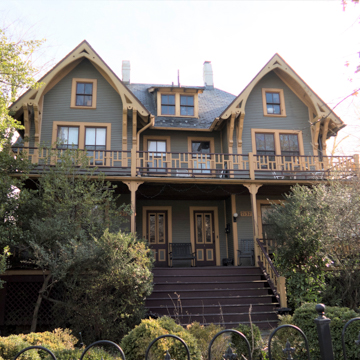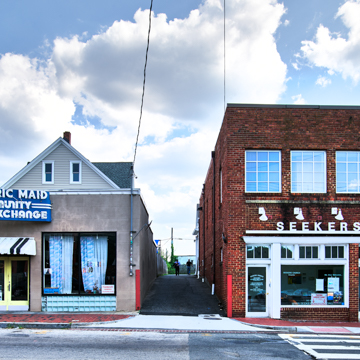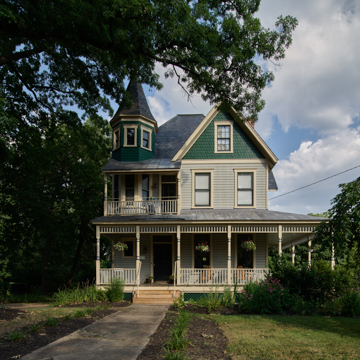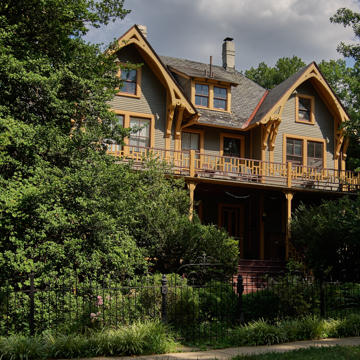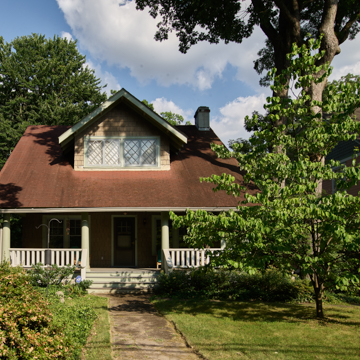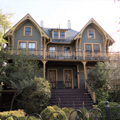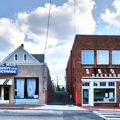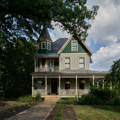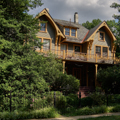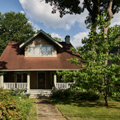This was the most successful of the many middle-class suburban communities that appeared along the fringes of Washington during the late nineteenth century. Its development was facilitated by the construction of the Metropolitan Branch of the B&O Railroad to provide ready access to downtown, and the job stability created by the enactment of the 1883 Civil Service Act. As the first suburban community in the county, it became the model for nearby Forrest Glen (1887), Capitol View (1887), and Woodside (1889). Established by New York congressman Benjamin Franklin Gilbert, Takoma Park was a speculative subdivision with lots laid out along meandering streets, offering a healthy alternative to city life for its middle-class home buyers. Promoted as “The Sylvan Suburb of the National Capital,” Takoma Park encompassed both residential and commercial development. It met with such success that it was incorporated in 1890, with Gilbert as its mayor, and by 1913 it was the largest town in Montgomery County.
The historic district centers around commercial buildings along Ethan Allen and Carroll avenues, mostly early- to mid-twentieth-century buildings erected after a fire destroyed the downtown in 1893. It is surrounded by houses in an eclectic mix of turn-of-the-twentieth-century architectural styles, including Queen Anne, Shingle, and bungalow houses. Within easy commute to the city, Takoma Park offered the verdant surroundings indicative of country living, conjured by street names such as Maple, Cedar, Holly, and Tulip.


